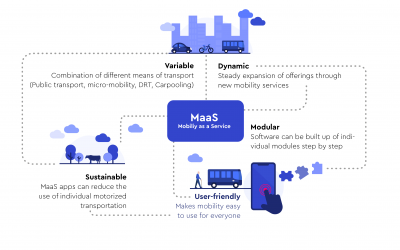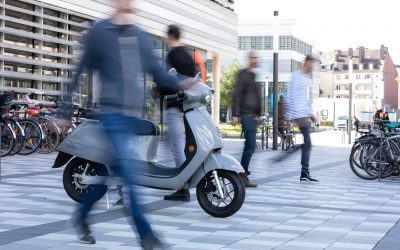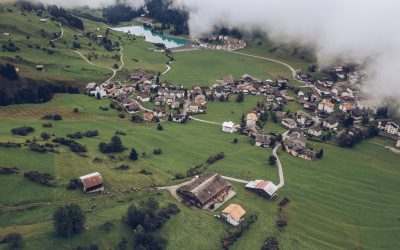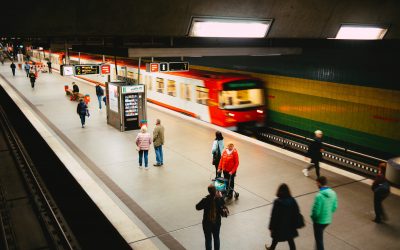Whenever we talk about the transport revolution and the associated restructuring of public transport, we cannot avoid the term «Mobility as a Service», abbreviated MaaS. But what exactly is «MaaS» and how can the digital approach help to sustainably advance the transport revolution?
Digital rail and on-demand rail replacement services
In Germany, up to 125 kilometres of rail are to be modernized by 2025. During the modernization, passengers will have to switch from rail to rail replacement services. This is also the case for passengers on the Stuttgart S-Bahn, while the main line there is being modernized this summer. Nevertheless, this rail replacement service is different, because: On weekends and weekend nights, it is main line offline – S-Bahn On-Demand online.
Green Fleet
Fleet management follows social and economic trends: New forms of work, digitization and the shift in values towards a greater understanding of sustainability are having an impact on the design of company-organized mobility. But what does this constant change in mobility structures mean for companies and where are the opportunities?
The Vienna Model
Vienna’s public transport system is among the best in the world. The network is dense and the frequency is tight. It is so well developed that you don’t even need to know the timetable. A total of 2.61 million people are transported from A to B by public transport here every day. The popularity can also be seen in the modal split, because: The public transport users have overtaken the car drivers. Around 38 percent of the distances are covered by public transport, while «only» 27 percent are covered by car. But what makes vienna different from other cities?
Mobility in the city
An ever increasing urbanization of our society is clearly visible. Young people in particular are increasingly moving their centre of life from rural regions to the cities. In addition, there are many commuters who do not want to live directly in the urban jungle, but who find well-paid jobs mainly in the cities. This congestion in the cities and the associated additional traffic flows have consequences – especially for our increasingly grey planet. But what challenges must urban public transport face in times of the mobility change? And what role will it itself play in this?
What’s green? The Deutsche Bahn
Whether in the city or in rural areas, everyone agrees on one thing: to protect our planet, we all need to become greener again. Not only in the household many people are making an effort to consume wisely and are once again considering whether they should use plastic bags or eat meat every day. There is also a rethink on mobility issues. Especially for Generation Z, travelling by plane is no longer «state of the art». Last year, the DB recorded 150.7 million customer trips which also shows that many people care about their green footprint.
Modern mobility in rural areas
Almost 16 million people live in rural regions throughout Germany. For them it is often a difficult task to get from A to B by public transport. After all, rural regions are at the back of the queue when it comes to expanding public transport. But why is the accessibility of these regions so poor and public transport hardly an alternative? How can it be guaranteed that people living in rural areas can also be mobile in a climate-friendly and cost-effective way?
Mobility between effectiveness and efficiency
Don’t worry, in this article we will not refresh the basics of business studies again. Rather, we would like to examine the extent to which the theory, which may already be somewhat dusty but is still valid and authoritative, can be combined with our daily practice, the transformation of public transport.
With digital solutions towards profitable public transport
Mobility is often still a resource-intensive undertaking – in every respect: Too many cars on the road cause a high level of environmental pollution, loosely set timetables mean an immense loss of time and excessively large containers and empty runs – especially in rural areas and at off-peak times – take their financial toll.
What are our neighbours up to? – New Mobility in Europe
Not only in Germany is the mobility of the future a central topic which is constantly gaining knowledge and alternative solutions. Looking over to our neighbours such as Sweden or the Netherlands shows that new mobility concepts are developing and establishing themselves in different ways in Europe.
Support your locals – Now more than ever
In times of Corona, many companies and especially small shops, restaurants, cafés etc. are currently experiencing a massive drop in sales. But in order for us to still be proud of a colourful neighbourhood with a wide range of offers even after Corona, the principle of «Support your locals» applies now more than ever!
Mobility is a matter of mind #stayconnected
We are always on the run: After work to our favorite place in the city, in the middle of the week to a business appointment once across the republic, on the weekend a short trip to a European metropolis and in the Easter holidays family vacation in the mountains…
Newest article
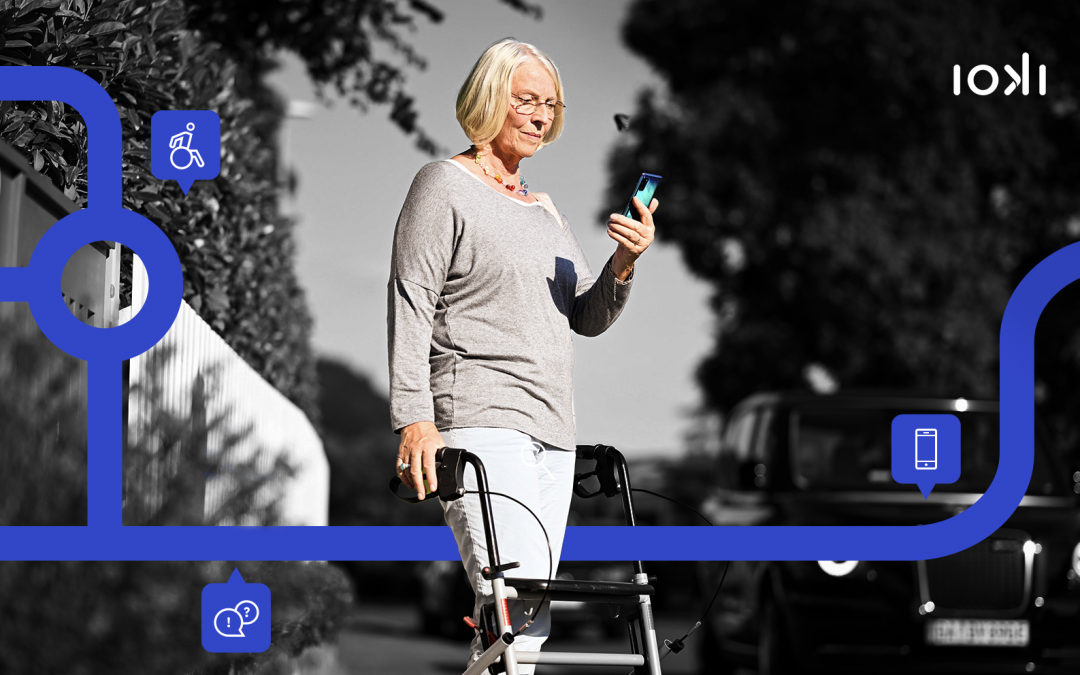
Transporte público adaptado a las personas mayores: ¿Cómo debe ser un transporte público adaptado a la edad?
La población europea envejece. En 2019, más de una quinta parte (20,3%) de la población de la UE-27 tenía al menos 65 años. Y la tendencia sigue en aumento. El cambio demográfico es un reto para el transporte público, pero también puede ser una oportunidad de crecimiento con una oferta de movilidad personalizada para las personas de mayor edad. Al fin y al cabo, si las personas de mayor edad ya no conducen, dependen cada vez más del transporte público para seguir participando activamente en la vida social.

